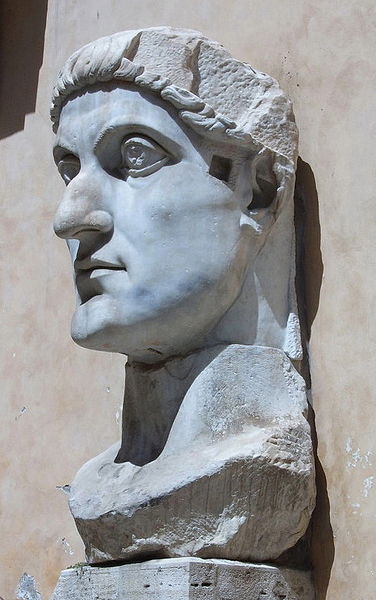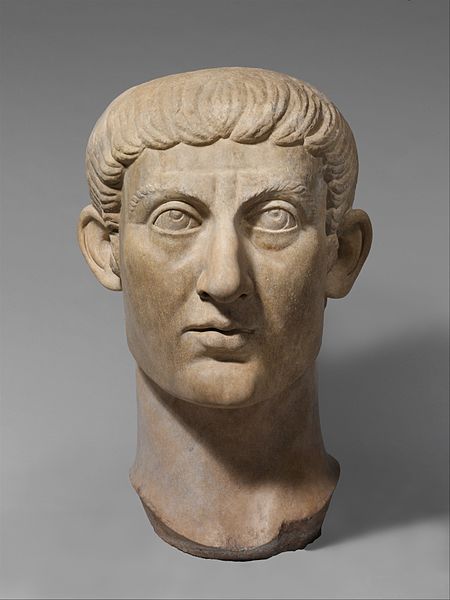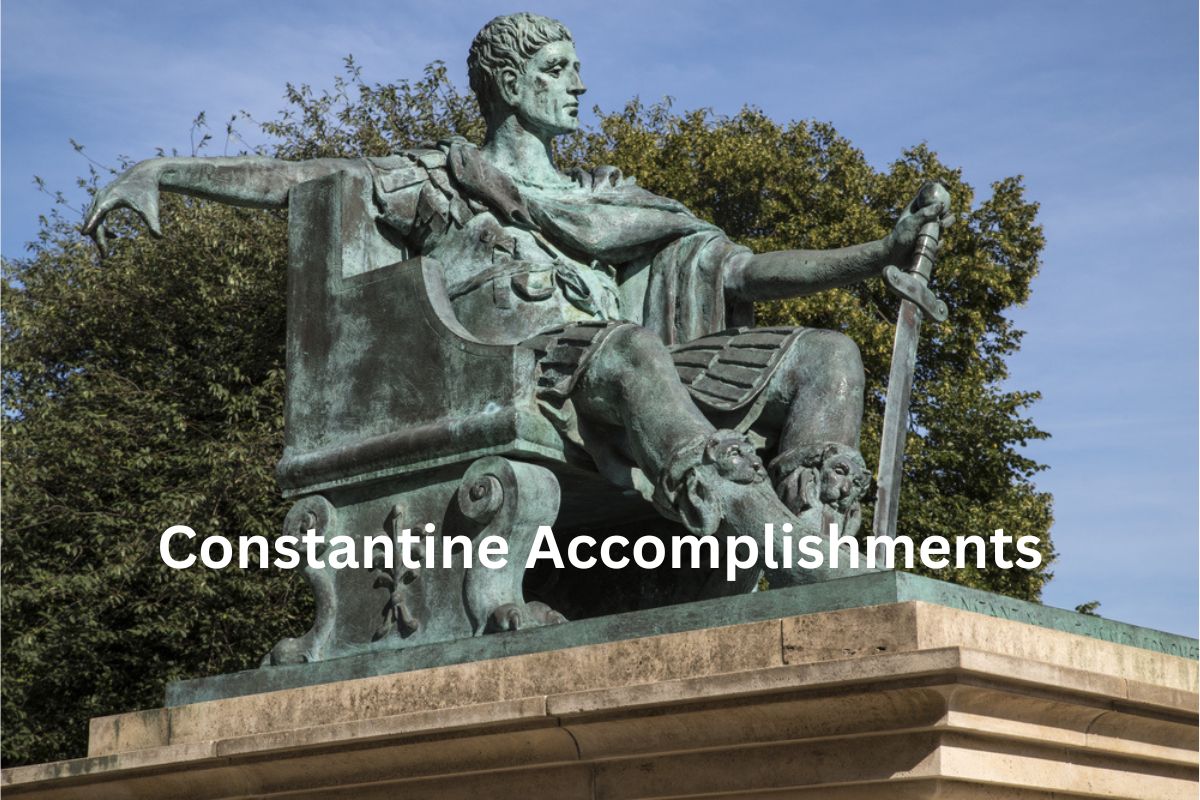Constantine the Great (272-337 CE) was the first Christian emperor of the Roman Empire. He issued the Edict of Milan in 313 CE, legalizing Christianity and ending persecution.
He founded Constantinople and implemented reforms, including in administration, finance, and law. Constantine achieved military victories, repelling invasions and securing borders.
He supported Christian artists, leaving a lasting impact on art and architecture. His reign marked a significant shift in Roman history, as Christianity gained prominence.
Accomplishments of Constantine The Great
1. Issued the Edict of Milan, legalizing Christianity in the Roman Empire
Constantine’s most significant accomplishment was the issuance of the Edict of Milan in 313 CE. This edict, issued jointly with Emperor Licinius, granted religious freedom to Christians and officially recognized Christianity as a legitimate religion within the Roman Empire.
Also Read: Facts About Constantine
The edict put an end to the persecution of Christians that had been prevalent for centuries and marked a major turning point in the history of Christianity. It allowed Christians to openly practice their faith, build churches, and enjoy the same rights and protections as other religious groups.

2. Founded the city of Constantinople
Constantine established the city of Constantinople in 330 CE, which he named after himself. The strategic location of Constantinople, situated at the crossroads between Europe and Asia, provided numerous advantages. It served as a vital hub for trade and commerce, facilitating economic growth and prosperity.
Additionally, the city’s location on the Bosporus Strait allowed for better control over the eastern provinces of the empire and provided a secure defense against potential invaders.
Constantinople went on to become the capital of the Eastern Roman Empire, later known as the Byzantine Empire, and a center of political, cultural, and economic power for over a millennium.
3. Defeated Licinius and became the sole ruler of the Roman Empire
Constantine’s victory over Emperor Licinius in 324 CE was a significant milestone in his career. The conflict between Constantine and Licinius arose due to a power struggle between the two emperors.
Constantine emerged victorious, solidifying his control over the entire Roman Empire and ending the period of co-emperorship known as the tetrarchy. With Licinius defeated, Constantine became the sole ruler of the Roman Empire, ushering in a new era of centralized imperial power.
This marked the beginning of Constantine’s reign as the first Christian emperor and paved the way for his subsequent reforms and initiatives.
4. Promoted and supported the growth of Christianity
Constantine actively promoted and supported the growth of Christianity throughout his reign. He built numerous churches, including the Church of the Holy Sepulchre in Jerusalem, which commemorates the crucifixion and resurrection of Jesus Christ.
Constantine also encouraged the conversion of pagan temples into Christian churches, further facilitating the spread of Christianity. He provided financial and legal privileges to the Christian clergy and exempted them from certain civic duties.
Additionally, Constantine convened the Council of Nicaea in 325 CE, which brought together Christian bishops to establish a unified doctrine and address theological disputes.
By promoting Christianity and removing obstacles to its expansion, Constantine played a crucial role in the transformation of the Roman Empire into a Christian state.

5. Convened the Council of Nicaea to resolve theological disputes
The Council of Nicaea, convened by Constantine in 325 CE, was a significant event in early Christian history. The council aimed to address the growing theological controversies, particularly the Arian controversy, which centered around the nature of Jesus Christ and his relationship to God the Father.
Constantine presided over the council, which brought together bishops from across the empire to discuss and debate these theological issues. The council resulted in the formulation of the Nicene Creed, which established orthodox Christian beliefs and rejected Arianism as heresy.
The council’s decisions played a crucial role in shaping the theological foundation of Christianity and defining its core doctrines.
6. Implemented administrative and financial reforms
Constantine introduced several administrative and financial reforms to strengthen the Roman Empire. He reorganized the bureaucratic structure, streamlining governance and enhancing the efficiency of the imperial administration.
Constantine also implemented new taxation systems to ensure a more equitable distribution of tax burdens and increase revenue for the state. His reforms aimed to centralize power and consolidate control, providing a more stable and coherent government.
Additionally, Constantine issued new laws and regulations, including the Codex Theodosianus, which compiled and standardized Roman laws. These legal reforms helped create a more just and uniform legal system throughout the empire, ensuring consistency and fairness in the application of laws.
7. Achieved military victories, including defeating the Visigoths and repelling invasions
Constantine’s reign saw several significant military victories. In 324 CE, he defeated the Visigoths in the Battle of Adrianople, securing the Danube frontier and pushing back the Gothic threat. Constantine’s military campaigns were not limited to the internal conflicts of the empire.
He successfully repelled multiple invasions from the Sasanian Empire, a powerful Persian force, maintaining the eastern borders of the Roman Empire and preserving its territorial integrity. Constantine’s military successes ensured the stability and security of the empire during his reign.
8. Initiated construction projects in Constantinople
Constantine’s founding of Constantinople was accompanied by numerous construction projects that transformed the city into a grand imperial capital. He commissioned the construction of magnificent palaces, public buildings, and infrastructure.
The most notable of these projects was the Hippodrome of Constantinople, an immense arena for chariot racing and other spectacles. The city’s architectural splendor and grandeur rivalled that of Rome itself, showcasing Constantine’s ambition and desire to create a city befitting the status of the imperial capital.
9. Introduced legal reforms, including the Codex Theodosianus
Constantine implemented significant legal reforms aimed at creating a more just and orderly legal system. He issued new laws and regulations that addressed various aspects of governance and social order.
One of the most important legal achievements of Constantine’s reign was the compilation and codification of Roman laws into the Codex Theodosianus. This comprehensive legal code organized and standardized the laws of the empire, making them more accessible and understandable.
The Codex Theodosianus served as a foundation for future legal developments and had a lasting impact on the legal systems of the Byzantine Empire and other successor states.
10. Acted as a patron of the arts, supporting Christian artists and craftsmen
Constantine actively patronized the arts, particularly Christian art and craftsmanship. He commissioned numerous artworks, sculptures, and architectural projects with Christian themes. Constantine’s support for Christian artists helped establish a distinctive visual representation of Christianity.
The art produced during his reign played a crucial role in the dissemination of Christian iconography and symbolism, shaping the artistic traditions of the Byzantine Empire and leaving a lasting impact on the development of Christian art.
Constantine’s patronage of the arts not only promoted cultural expression but also strengthened the connection between the imperial court and the Christian religion.
